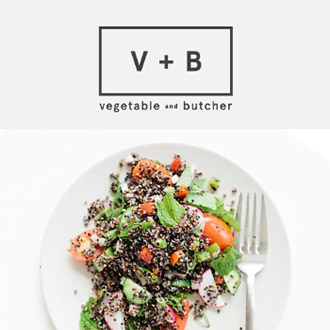The story of how chocolate began to become the darling of confectioners and scientists alike is wrapped up in the story of Alfred Nobel – of the “Nobel” that initiated the peace prize, no less. Since this month’s RecipeRedux features favorite chocolate pairings (I haven’t met a dietitian yet who wasn’t a least a moderately serious chocolate lover), I did some digging to find out where all the buzz about chocolate and health started, and was fascinated by what I found. As explained the journal Nutrients, it started with a bang:
“Ascanio Sobrero (1812–1888) traveled from Turin, Italy, to Paris, in the mid-19th century, to work under the renowned chemist Theophile-Jules Pelouze. In Pelouze’s laboratory Sobrero uncovered the reaction whereby mixing glycerol with nitric and sulfuric acids created an explosion, except if the mixture was cooled during the reaction process. This new compound was labeled: nitroglycerine (NG)…Records indicate that Sobrero tasted nitroglycerine and found it sweet, but warned “precaution should be used, for a very minute quantity put upon the tongue produces a violent headache” [6]. Four years later, Alfred Nobel sought tutelage in Pelouze’s laboratory…Nobel’s family was in the road/tunnel construction business in Sweden. Recognizing the financial potential of such a product, Nobel returned with NG to Stockholm. Nobel was concerned with world peace, supported the humanities, and of course valued scientific discoveries. He bequeathed his entire estate to a trust designed to award those, who through their hard work and discoveries, might change the world. Thus, the origins of the Nobel Prize can be linked back to nitroglycerine.
Nobel suffered from poor health and intense pain related to angina pectoris. He was advised, coincidently, to take NG for his heart complaint. At the time, it seemed incredulous to Nobel to consume a compound utilized in road construction. Seven weeks before his death he wrote:
My heart trouble will keep me here in Paris for another few days at least, until my doctors are in complete agreement about my immediate treatment. Isn’t it the irony of fate that I have been prescribed N/G 1(nitroglycerine), to be taken internally! They call it Trinitrin, so as not to scare the chemist and the public.
[7]
Why did the physicians prescribe NG? Twenty years earlier Benjamin Richardson, a medical doctor and researcher working in London, investigated the physiological effects of amyl nitrite that was administered to a frog. The capillaries in the frog’s foot dilated demonstrating the relationship between NG and vasodilatation [8]. Others worked on the physiology and mechanistic pathways of nitrites over the 19th century. William Murrell, a London physician, prescribed NG to patients and published the positive effects NG provided on relieving chest pain [9,10,11,12]. During this period NG was prepared as a liquid and not easily transported. Murrell wrote to British chemist William Martindale requesting that a solid form of the drug be prepared so that patients could consume the drug, regardless of location, when angina pectoris occurred. Murrell suggested placing the drug (hundredth of a grain) in chocolate [13]. At the turn of the 19th century, consequently, NG and chocolate became linked. The public loved this “drug,” while Murrell regretted his request. He believed the chocolate-coated NG pill would be misused and treated as candy; he tried to retract his original suggestion, but was unsuccessful. Nevertheless, he continued to prescribe NG to his patients [14]. Murrell had no way of knowing that an active ingredient in cocoa (flavonoids) would be investigated for its up-regulation of nitric oxide (a derivative of NG).”
Fascinating, right? You can read the rest of the article here: Cocoa and Heart Health: A Historical Review of the Science. (For a peer-reviewed publication, it’s easy to read and eloquently written!) It’s important to remember that chocolate, like any drug, should be taken with the right dosage and frequency. A small amount of cacao or dark chocolate (which contains more of the active compounds) on a daily basis is better than a hunk of milk or candy chocolate a few times a month in terms of health benefit. I look for chocolate that’s at least 70% cacao – and particularly love it with salt and nuts – or both!
Which brings me to my loaded chocolate “brittle” – easy and quick to make, but impressive to gift or serve. With the crunch of toasty pecans & cashews, the sweetness of dried fruit, and a salty flavor when it hits your tongue, this is the perfect thing to include in a gift basket, or just twist into cellophane as a party favor.
Nutty Chocolate Brittle
Ingredients
- 1 bar dark chocolate
- 1 oz nuts
- 1 Tbsp dried fruit
- dash salt
Directions
Heat oven to 300F. Place the chocolate bar in a piece of tinfoil with 1-3 inches extra space around each side; pinch around form of bar and corners to make a mold. Distribute the nuts and dried fruit onto the bar, making sure each piece comes in contact with the chocolate. Sprinkle on salt. Place in oven for 5-7 minutes until chocolate is melted. Remove and chill until hardened. Peel off tinfoil.













Love how easy brittle/bark is to make. Yours looks delicious!!
Thanks! I realized after writing it that “bark” is probably more appropriate…but can’t go wrong with a crunch!
Simply perfect! A great showcase for chocolate IMHO